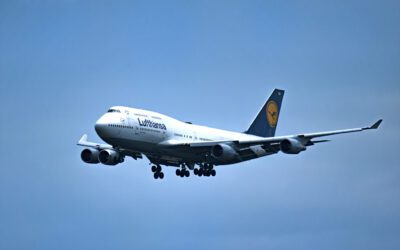While cruise ships may have 20 or more categories of cabins, there are actually just five main cabin types: inside, inside view, ocean view, balcony and suite. The other categories are variations of these cabin types, distinguished by cabin size, view, physical and service amenities and deck. The price of each cabin depends on all these factors.
Once chosen, individual cabins also have options, such as twin beds or a single queen bed.
The names of the cabin categories generally describe them well.
Inside cabins are typically the smallest, and have no porthole, window or door to the outside. On newer ships, they’re not as cramped as they were in the past.
On some ships, inside cabins have something called a “virtual view.” The cabin still has no porthole, window or outside door, but it has a video projected on a cabin wall of a virtual porthole, window, or balcony looking out on the ocean, to give you an outside cabin feel. There may be real curtains framing the video to make it feel more real.
Inside view cabins are on some of the new mega-ships. They have windows and may have balconies, but instead of facing the ocean, they face an open exterior or interior central area of the ship.
Ocean view cabins face the outside of the ship, and have a porthole or large window facing the ocean.
Balcony cabins have a balcony (veranda) with access directly through a large glass door from the cabin, which allows passengers to be outside without going to a public area of the ship.
Suites are the largest cabins on the ship. They typically have separate bedrooms from the remainder of the cabin, special perks and a wide variety of amenities, such as butler service. They may or may not have balconies.
Here are my top tips to help you choose your cabin wisely.
Aft cabins often have larger balconies than other ships’ cabins, but they’re over the stern thrusters used to power and steer the ships, resulting in periodic vibrations felt in the cabins, which may be annoying.
Some forward cabins on the lower decks are located directly above the ships’ bow thrusters, used for critical maneuvering. Late sleepers may be startled out of their sleep by their noise and vibration during early morning dockings.
Hallway positions of cabins can be critical. Being near an elevator bank or stairwell may be convenient, but it’s usually noisy late into the evening, and perhaps into the wee hours as well. Of course, if you have limited mobility, choosing a cabin near the elevators will cut down the distances required to get around the ship.
Outside noise can be a problem in more than a few cabins. Use your ship’s deck plan to choose a cabin away from noisy public areas, such as discos, lounges, casinos, stores, bars and restaurants.
There are two noisy areas of the ship to which you should pay particular attention. On some ships, cabins are located directly under the jogging track. Joggers are generally an early morning group, so if you’re a late sleeper, choose a different cabin. Some ships have self-service laundry rooms. They are often in operation almost 24/7, especially on cruises with lots of families. I try to choose cabins far from them.
Privacy can be a problem with inside view cabins on mega-ships, such as Royal Caribbean’s Allure of the Seas. Between the ships’ banks of cabins rising on multiple decks on each side of the ship are large outdoor and indoor public areas. These banks of cabins include both inside view cabins facing the central public areas and outside cabins facing the ocean.
Passengers behind windows with open curtains and on balconies of inside view cabins have little privacy. They are easily seen by passengers and crew in the central public areas facing the cabins, as well as from inside view cabins in the cabin bank across from them. Generally these staterooms are also noisier.
If you’re prone to motion sickness, it’s important to know that the stabilizer systems installed on today’s cruise ships are effective, reducing the ships’ pitching and rolling on the ocean. Except in bad weather and high winds, few passengers notice their ship’s movement. However, if you’re susceptible to seasickness, choose a cabin midships (central area between the bow and stern of ships) on the lower decks. They have less pronounced movement.
Obstructions such as large lifeboats can eliminate the main advantage of outside and balcony cabins. If you’re not sure a cabin’s view is unobstructed, ask.
As you can see, there’s much to consider when choosing a cabin. Use your ship’s deck plans, and its cabin descriptions to help you use my list of tips. Ask questions when you’re not sure about cabin choices. I use a travel agent to help me, even though I’m a veteran cruise passenger.
(Image: Regent Seven Seas Voyager suite, Copyright © 2016 NSL Photography. All Rights Reserved.)
After many years working in corporate America as a chemical engineer, executive and eventually CFO of a multinational manufacturer, Ned founded a tech consulting company and later restarted NSL Photography, his photography business. Before entering the corporate world, Ned worked as a Public Health Engineer for the Philadelphia Department of Public Health. As a well known corporate, travel and wildlife photographer, Ned travels the world writing about travel and photography, as well as running photography workshops, seminars and photowalks. Visit Ned’s Photography Blog and Galleries.



